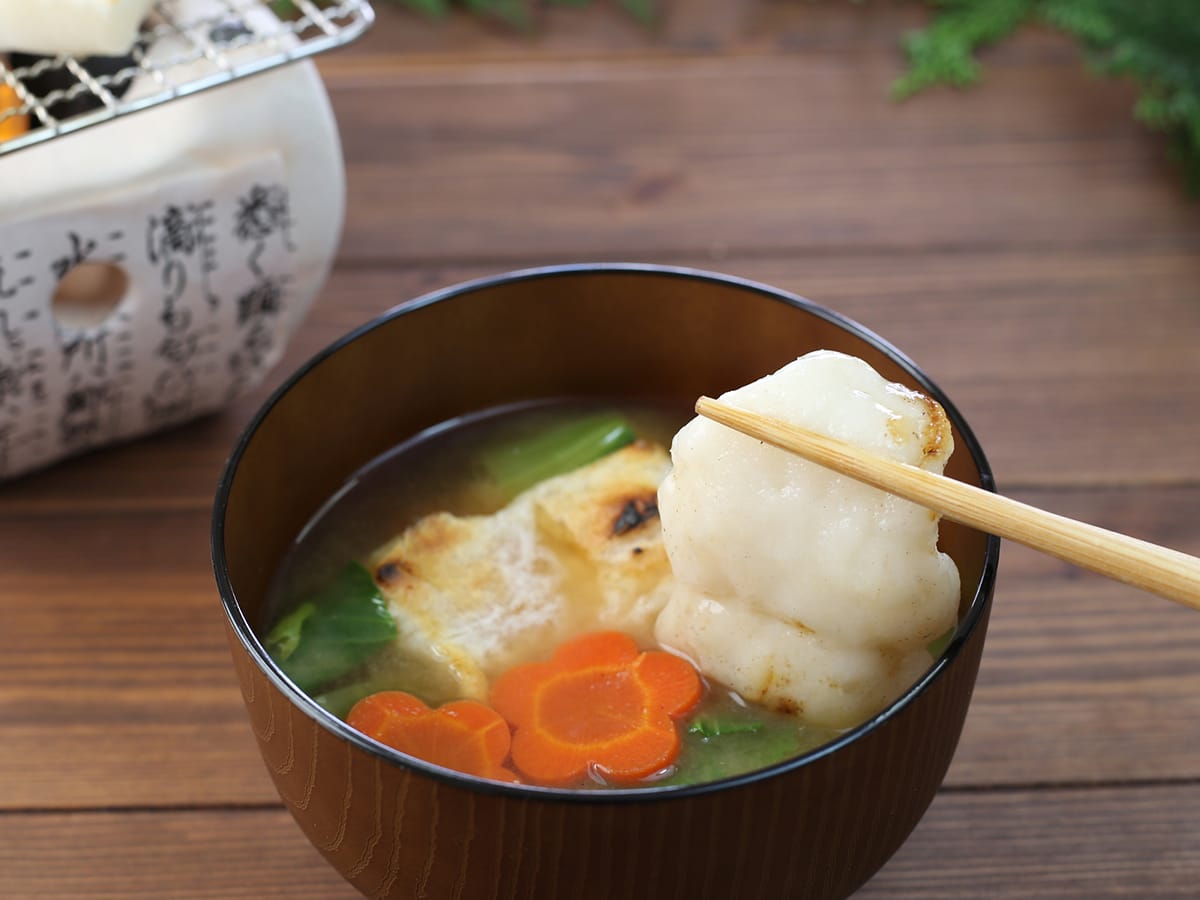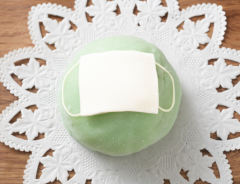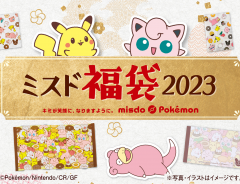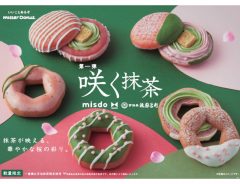
Source: アマノヤスヒロ Yasuhiro Amano | © PIXTA
Delicious Ozoni Japanese new year mochi soup: Regional varieties ranked by nutritional value
- Source:
- © PR Times, Inc.
- Tags:
- Japanese cuisine / Mochi / New Year / nutritional value / Ozoni / Ranking / Soup / zoni
Related Article
-

A mask-wearing mochi: Even traditional desserts in Japan are taking precautions
-

Kumano region tops poll as Japan’s no. 1 travel destination for 2020
-

Catch lucky ‘fukubukuro’ bags full of Pokemon Merch and doughnut vouchers at Japan’s Mister Donut
-

Top ten YouTube channels popular among high school students in Japan
-

Super puffy bacon mochi sandwich experiment looks like a Studio Ghibli anime delicacy
-

Mister Donuts and Gion Tsujiri’s ultimate matcha x sakura donuts spring collab


For many people around the world, the year-end and new year period is a time of family gatherings and special meals, which presents many opportunities to eat all kinds of tasty dishes. For the health-conscious eater, however, this period can also present the challenge of striking the right balance between enjoyment and prudent dietary choices.
In Japan, the new year period traditionally involves おせち料理 osechi-ryōri, a collection of special dishes with auspicious symbolism believed to bring good luck and fortune.
One of the central dishes providing the most sustenance in this collection is 雑煮 zōni (or with the honorific prefix 'o-" as お雑煮 o-zōni), a hearty soup that usually includes mochi rice cakes. At its best, it's delicious, warming, and comforting, and an essential part of a traditional Japanese new year's meal.
アマノヤスヒロ Yasuhiro Amano | © PIXTA
Every region in Japan has its own unique take on this new year's favorite, with variations in ingredients, cooking methods, soup stock and sometimes even replacing mochi with things like tofu or taro root. Therefore, depending on which region of Japan you're in, the nutritional content of your zōni will also change.
Fortunately for our health-conscious readers, Japanese diet, exercise, and weight management application カロミル Calomeal, developed and provided by ライフログテクノロジー株式会社 Lifelog Technology Co., Ltd., has ranked the most well-known regional zōni varieties by their nutritional content, so you can make more informed decisions about your meals at this time of year.
Before we begin, here are the zōni varieties featured in this data set, listed by prefecture in geographical order from north to south:
As you can see, there is a great deal of variety in zōni from north to south.
Zōni ranking by nutritional value
Let's take a look at the results, beginning with protein:
Protein
At first place in protein content at 29.7 grams per serving is 鮎雑煮 (ayu zōni | Sweetfish zoni) from Shimane Prefecture in the Westernmost region of Honshu Island, using sweetfish from the Takatsu and Enogawa Rivers. It's traditionally served with a whole sweetfish inside, and has a rich broth made from sweetfish that have been gutted and dried.
Coming second at 22.6 grams per serving is くるみ雑煮 (kurumi zōni | Walnut zoni) from Iwate Prefecture in the Northeastern region of Honshu Island. This soup is chock full of tasty ingredients including salmon roe and various vegetables. The mochi is dipped in a separately served sauce made with walnuts, which are rich in protein and contain plenty of vitamins, minerals, and dietary fiber. The walnut sauce also places this soup at the top of the list in calories (471) and fat (24.1 g) per serving, but it's good quality fat, so you may want to enjoy it but in moderation.
Fiber
Ranking first in fiber content at 5.4 grams per serving is 納豆雑煮 (nattō zōni | Natto zoni) made with fermented soybeans, a new year's speciality in some areas of Kumamoto Prefecture in Kyushu, the most southerly of the four main islands of Japan. The soup stock is made from bonito and kelp, and sweet soy sauce is added to the stock for extra flavor.
Coming in for a close second at 5.2 grams is 小豆雑煮 (azuki zōni | Azuki bean zoni) from Tottori Prefecture next to Shimane Prefecture in Western Honshu. Also enjoyed in other regions of Japan, this is a sweet zoni soup known as 善哉 zenzai, featuring the same red Azuki beans found in numerous Japanese sweets. Azuki beans are rich in dietary fiber, vitamin B, minerals, and polyphenols. They're also rich in insoluble dietary fiber, which can help if you have a tendency for constipation. While its sweet disposition lands it at the top of the sugar content list at 47 grams, it also has the lowest sodium content at only 0.1 grams per serving.
Calories
Among the 28 zoni soups in this set, かぶ雑煮 (kabu zōni | Turnip zoni) from Yamaguchi Prefecture, the westernmost prefecture of Honshu Island, is the winner when it comes to the lowest calorie content at 130 calories. This simple zoni, which contains mochi, turnips, and mitsuba in a clear soup, doesn't skimp on taste even though it's low in calories. Giving Turnip zoni some competition in the low-calorie ranking is ねぎ雑煮 (negi zōni | Welsh onion zoni) from Ishikawa Prefecture in central Honshu, which is also at 130 calories per serving.
Going up the list from the bottom, you'll also find other low-calorie zoni soups featuring various greens, dried bonito flakes, and seaweed. If you have an opportunity to try or perhaps even make some of these at home, they're a good choice if you're worried about your calorie intake.
Carbohydrates
The zoni with the lowest carbs is うちがえ雑煮 Uchigae zōni from Tokushima Prefecture in Shikoku Island at 16.3 grams per serving, a feat it achieves by replacing the standard mochi rice cakes with tofu. It also ranks fourth lowest among savory zoni soups in sodium content at 1.61 grams per serving.
Here is how the 28 zoni soups ranked in terms of fat, sodium and sugar content:
Fat
Sodium
Sugar
No matter what part of Japan you visit at New Year's time, being able to sample the local zoni is almost always a rewarding experience. Although this article hasn't covered every possible variety available, hopefully you'll now have more information to make healthy choices as you enjoy this special time of year!
Calomeal
カロミル Calomeal is a food, exercise, and weight management application. You can keep track of your daily meals with a single photo, and the nutritional value is automatically calculated and registered using AI image analysis technology. Calories, protein, fat, carbohydrates, sodium, sugar, fiber, vitamins, and minerals can be calculated and recorded, allowing users to manage their health not only by dieting but also by considering the nutritional balance of what they eat. The app also has exercise and vitality management functions, for "total health management."
For more information, visit their website here.